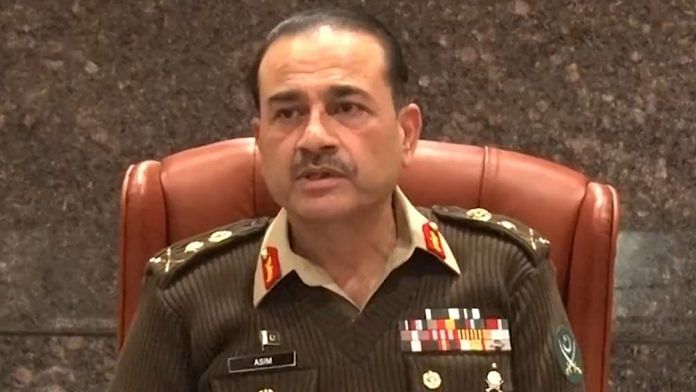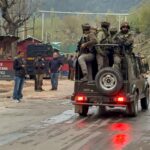Pakistan’s weak political government is unable to introspect or deviate from the army GHQ’s approach: look India in the eyes and loudly announce that it is ready for an escalation. In fact, the press briefing from the Prime Minister’s Office after an intense meeting of the National Security Committee was sharp in its tone while responding to India’s sanctions on Pakistan. Islamabad announced shutting Indian overflights, a reciprocal cancellation of SAARC and other visas to Indian citizens (except for Sikh religious tourists), declaring the military contingent at the Indian High Commission as persona non grata, and cancelling all existing agreements, including the Simla agreement.
The statement, however, did not say anything about cancelling the agreement on the Line of Control (LoC) that is part of an attached document of the Simla Agreement. One thing is certain: the coming days may see a sharp rise in hostilities at the LoC, for which Islamabad looks prepared.
Army’s lost image
From Rawalpindi’s perspective, the increase in bilateral belligerence is only to its benefit. The heightened tension is likely to regain the army’s lost image as Pakistan’s saviour. It was losing popular support in the past couple of years, especially in Punjab, a province that matters the most to the armed forces. This was due to the army chief’s treatment of Imran Khan and his party, and the military’s involvement in rigging the 2024 elections.
There is a huge concern regarding India holding the Indus Waters Treaty in abeyance, a declaration that is considered an act of war. It comes at a time when the Sindh province is up in arms over the army leadership and the political government planning six new canals that would hamper the flow of water to the southern province. Given that cancelling the water agreement is a complicated matter which may not have an immediate impact, the hype around the issue will be used to build a narrative that will project India as a dangerous enemy and the army as the only strength that may be able to ensure security.
In fact, the popular notion spread by the mainstream media is that the Pahalgam incident is India’s false flag operation to undermine Pakistan. The narrative being developed through mainstream media, including social media, is that Pakistan is under a deliberate attack.
There is, of course, no mention of the jihadis that are not just being kept in the country but were being encouraged and beefed up in the last couple of years. This was done with the intent of responding to what is believed to be India’s assistance to insurgency in Balochistan and the tribal areas. Some that I spoke with suggested that a response was inevitable,especially after the killing of army personnel during the Jaffar Express hijacking in Balochistan. Islamabad clearly holds India responsible for the attack, and any tit-for-tat response is aimed at building the image of both the army chief and the armed forces.
Also read: Five choices for Modi to restore India’s red line in Kashmir. Each is perilous
Ready for war
The region is back to a new phase of proxy war. It makes one also wonder about the effectiveness or longevity of the restrictions imposed earlier by FATF that had forced Islamabad to cap its jihadi project. During the heyday of FATF restrictions, it seemed that militancy was history—indeed a naive assessment, given that the jihadi infrastructure was still around. The fear of international sanctions seems to have evaporated, especially with the recent changes in geopolitics marked by a reduction in the effectiveness of multilateralism and a comparative reduction in American capacity to influence theatres of conflict.
Islamabad appears confident to benefit from the transactional nature of the new American administration, with whom it has been working to put relations back on some kind of track. It has worked diligently and consistently to develop counter-terrorism dialogue with Washington as a channel of communication. The idea is no longer to become a frontline state, but one sufficiently useful for the Trump administration, so that it doesn’t put the same kind of pressure Biden did. Rawalpindi is comfortable in betting on the transnationality of bilateral relations, with the US to offset the pressure that may come its way.
Notwithstanding Pakistan’s economic conditions, which are not exactly enviable, we are looking at a regime that seems less concerned about the economic implications of a war. It is gaining ground and building confidence, which will be helped by an escalation in regional conflict. The conflict escalation in the coming days will be accompanied by a war of narratives on both sides of the border. Rather than an aggressor, Pakistan aims to present itself as a victim of terror, which is nonetheless ready to respond to an escalating security threat.
Instead of complaining about military vehicles running out of fuel, General Bajwa’s successor looks more than ready to use all national resources in fighting his war. And there is no politician worth their salt to make him think otherwise, or an international environment that could put a natural stop to the conflict escalation.
Ayesha Siddiqa is a senior fellow at the Department of War Studies at King’s College, London. She tweets @iamthedrifter. Views are personal.
(Edited by Prasanna Bachchhav)
var ytflag = 0;
var myListener = function() {
document.removeEventListener(‘mousemove’, myListener, false);
lazyloadmyframes();
};
document.addEventListener(‘mousemove’, myListener, false);
window.addEventListener(‘scroll’, function() {
if (ytflag == 0) {
lazyloadmyframes();
ytflag = 1;
}
});
function lazyloadmyframes() {
var ytv = document.getElementsByClassName(“klazyiframe”);
for (var i = 0; i < ytv.length; i++) {
ytv[i].src = ytv[i].getAttribute('data-src');
}
}








